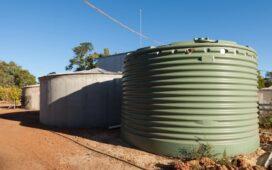Soil testing is the foundation of successful agriculture and horticulture practices. It is the science of analyzing a soil sample to determine its nutrient content, pH level, and physical properties. Soil testing provides information to farmers and landscapers about the soil’s fertility status and other characteristics that are essential for plant growth. The five primary methods of soil testing include physical, chemical, biological, plant analysis, and field testing. These methods provide different insights into the soil’s properties but work together to provide a complete picture of the soil’s health.
The Importance of Soil Testing:
The composition of soil consists of an intricate and ever-evolving combination of minerals, organic materials, water content, atmospheric gases, and microscopic organisms.
The makeup of soil has a profound impact on the growth of plants, the availability of nutrients, the retention of water, and the overall health of an ecosystem. In order to properly manage soil, it is essential to have a thorough grasp on these elements. Soil testing serves as a gateway into this intricate realm.
- Managing nutrients effectively is crucial for optimal growth and development: The soil acts as a storage facility for vital nutrients that plants need in order to grow. NPK, which refers to nitrogen, phosphorus, and potassium, are key nutrients that must be present in the correct proportions. Calcium, magnesium, and iron are all crucial secondary and micronutrients. By conducting soil testing, farmers and gardeners can accurately assess nutrient levels and make educated choices regarding fertilization. This ensures that plants do not suffer from either excessive use or deficiencies, which could hinder their growth.
- Maintaining pH equilibrium: The acidity or alkalinity of the soil, known as soil pH, has a significant impact on the availability of nutrients and the activity of microorganisms. Specific pH ranges are favorable for different plants, and by conducting soil tests to determine pH levels, one can make necessary amendments to create an optimal environment for desired crops or vegetation.
- The arrangement and feel of soil are determined by its structure and texture: The size of soil particles varies, which ultimately determines the structure and texture of the soil. Sandy soils have fast drainage but may lack nutrients. On the other hand, clay soils hold water but can become compacted. Loamy soils find a middle ground between the two extremes. Testing the soil helps identify its texture and assists in making informed decisions regarding irrigation and cultivation methods.
- Impact on the Environment: In addition to its importance in agriculture and landscaping, soil quality is a critical factor in environmental management. By conducting soil testing, we can detect harmful substances such as heavy metals, pollutants, and pesticides. It is essential to assess these elements to protect water bodies, prevent pollution, and encourage sustainable land utilization.
Approaches to Soil Analysis:
To obtain precise information about the physical, chemical, and biological features of soil, multiple approaches are utilized for assessing its properties. These approaches play a crucial role in providing valuable data on soil characteristics.
Analysis in the laboratory:
In order to conduct a comprehensive analysis of an assigned area, multiple soil samples are collected from various points and subsequently sent to a laboratory for further investigation. Chemical tests are employed to evaluate nutrient content, pH levels, and the presence of contaminants. Physical examinations focus on assessing factors like texture, structure, and moisture retention capabilities. Furthermore, biological tests explore both microbial activity and biodiversity within the collected soil samples.
Kits designed for easy transportation in the field:
Although these kits enable testing of pH, nutrient levels, and electrical conductivity on-site, their accuracy may not match that of laboratory analyses despite providing rapid results.
Remote Sensing:
The utilization of advanced technologies such as satellite imagery and drones allows for a more comprehensive understanding of soil conditions. By employing remote sensing techniques, variations in soil properties across extensive areas can be detected, thereby facilitating precision agriculture and effective land management strategies.
Analyzing the findings of soil test results:
Expertise is crucial in understanding and utilizing soil test results to make informed decisions. Generally, soil test reports present details about nutrient levels, pH, and recommendations for amending the soil. These results can be analyzed and specific soil management plans can be created with the expertise of agronomists, agricultural extension agents, and soil scientists.
On a final note, soil testing is an essential practice that provides valuable information about soil fertility, nutrient levels, and potential contaminants. The methods and equipment used in soil testing have evolved over the years, and modern technology allows for faster and more accurate results. By working with professionals like Alpha Environmental, who specialize in soil testing, individuals can ensure that their soil is healthy and productive, leading to better yields, improved plant growth, and a healthier environment.


